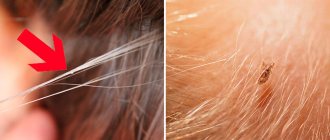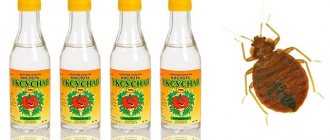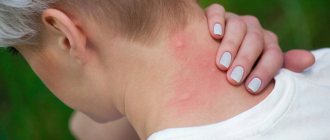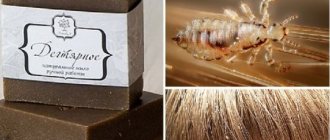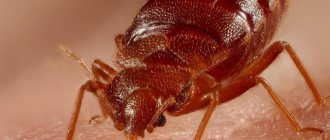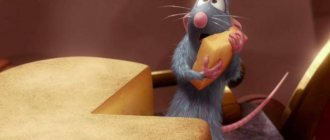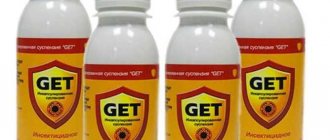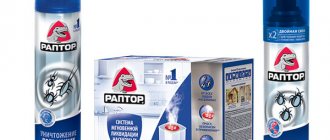What is vinegar?
This product is a solution whose main component is acetic acid. Of course, everyone knows that when the essence is diluted with water in a certain proportion, vinegar is obtained, but with a different percentage.
The acid itself is produced in two ways: by distilling wood materials or by fermenting wine drinks, honey or fruits. On a production scale, both methods are generally combined to obtain an inexpensive and high-quality product.
How can you replace vinegar when disinfecting shoes?
In addition to acetic acid solution, the following are used to disinfect footwear: hydrogen peroxide, chlorhexidine, ammonia, potassium permanganate solution, soda, table salt, activated carbon, formaldehyde, alcohol and vodka.
According to reviews from people who have encountered a similar problem, antibacterial shoe sprays, as well as devices with bactericidal ultraviolet lamps, are helpful as an alternative remedy.
Note! After purchasing a new pair of shoes, it is better to disinfect them: it is unknown who tried on this pair of shoes before you. It is possible to become infected even if a person with nail fungus was wearing socks.
Cleanliness is the key to health
Due to its increased acidity, vinegar should be considered a product that helps in solving issues of cleanliness. This is an excellent solution for removing scale. Also, due to the properties of acid, vinegar is able to break down dirt.
Getting a haircut at home to make it look like something from a salon: 9 stylish hairstyles
White bed linen without bleach: I put 3 products in the washing machine
A woman managed to fill a swimming pool on the street: she needed a hose and a plastic bottle
However, you should not rely entirely on this solution alone. Particularly dirty areas will not be able to be cleaned properly using vinegar alone. Nowadays there is a huge selection of all kinds of products that can cope extremely effectively with any type of pollution. In addition, most modern cleaners contain disinfecting components.
Can vinegar be used as a cleaning agent?
Although vinegar is a poor disinfectant, it is an excellent cleaner. Its high acidity can break down stubborn build-ups of soap, dirt and scale.
Vinegar can be used to remove dirt and dust from:
- glass;
- window;
- countertops;
- shells;
- slabs;
- coffee makers;
- shower heads.
However, it is not safe to use vinegar on some surfaces. Its acidity can damage surfaces such as:
- tree;
- granite;
- marble;
- soapstone;
- aluminum;
- cast iron.
Warning ! Never mix vinegar with bleach, as the combination produces dangerous fumes.
How to use when cleaning the house
It is worth noting once again that as a disinfectant, to combat germs and various types of bacteria, vinegar cannot be used as an independent remedy. It can only act as an accompanying solution when carrying out household cleaning work.
If at a certain time it is not possible to use professional cleaning products, then vinegar can be used as a preventative measure. Its use will allow you to clean some contaminated areas.
Nikolay Drozdov was included in the list of the most stylish men according to GQ
The driver decided to check what would happen to an electric car stuck in a traffic jam at -11°C
Pastel is the spring 2021 trend: how to correctly include the most fashionable colors in your wardrobe
To clean surfaces such as floors, shelves, tables or windows, you need to dilute vinegar in warm water, taking both components in equal parts.
However, if you simply wipe the contaminated area with it, it will give absolutely no result other than a sharp and persistent odor. For a possible effect, you need to liberally apply the solution to the surface and leave it in this state for thirty to forty minutes. After this time, it is necessary to remove excess water and wipe everything with a dry cloth.
Before cleaning, you should definitely take into account that acetic acid can break down some types of materials. These types include cast iron, natural stone, wood and aluminum. Therefore, when cleaning coatings made from these materials, it is not recommended to use vinegar, otherwise they can be damaged.
Disinfecting surfaces with vinegar
Raw materials are produced by oxidizing alcohol-containing liquids with the help of acetic acid bacteria. The resulting acetic acid is diluted with water to a concentration of 40–80% for vinegar essence or to 3–15% for table vinegar.
The biochemical composition of table vinegar allows it to be used as a disinfectant. Acid destroys the structure of microbes or fungi and inhibits important functions. In viruses, it slowly and weakly impairs the vital functions and practically does not damage the shell.
Acetic acid solutions destroy:
- intestinal parasites and infections;
- causative agents of leprosy, tuberculosis;
- mold (black, blue, gray);
- Monilinia fruit (causes rot of stone fruit trees);
- Colletotrichum (phytopathogens of agricultural crops and wild flora);
- Penicillium aureus (damages structures);
- nosocomial infections;
- pyogenic bacteria.
The vinegar solution, when washed/irrigated, does not destroy pathogens inside the porous material and does not remove mold stains.
To eliminate them, you need deep impregnation with a disinfectant with a bleaching effect. Table vinegar 9% is suitable as a disinfectant:
- for general cleaning of the premises;
- getting rid of ants, bedbugs, cockroaches (irrigate the places where they are found);
- soil disinfection (fill the soil);
- disinfection of garden crops (sprayed);
- washing the refrigerator and other kitchen appliances;
- washing in order to get rid of subcutaneous mites, worm eggs, other parasitic insects and infestations;
- treatment of toys, dishes, and other items against parasites and infections;
- removing sweat stains, animal marks, urine.
Instead of ready-made vinegar, households also use a disinfectant made from diluted essence. Dilute according to the table.
Proportions for disinfectant solution:
| Solution concentration (%) | Water (ml) | Vinegar essence 70% (ml) |
| 9 | 700 | 100 |
| 6 | 1100 | 100 |
| 3 | 1400 | 100 |
| 25 (for weed control) | 625 | 250 |
A 9% essence solution is used to dilute the product with a concentration of 6% (1:1.5) or 3% (1:3). Table vinegar 9% or 6% is not diluted. For a liquid of 3%, add 3 parts of water to the first, and in the second - in a ratio of 1:2.
Disinfection of upholstered furniture
For prevention, upholstery is disinfected from intestinal parasites, fungi and bacteria if there are animals, small children or people with a contagious disease in the house.
Disinfectant solution recipe:
- 100 ml vinegar 6%;
- 200 ml warm water;
- 40 g salt.
Spray the upholstery with a diluted disinfectant solution and leave to dry. If the furniture is stained with feces or animal marks, the area is washed and filled with undiluted vinegar and salt, and after an hour, washed with soda.
Disinfection of children's toys
It is better to disinfect by washing with laundry soap, wiping with chlorhexidine, and immersing in boiling water. In everyday life, a 3% vinegar solution is also used.
Toys:
- Wipe or immerse in solution, press with pressure.
- After 20 minutes, rinse.
- Dry.
Products are disinfected daily during illness and recovery. For prevention, treat with a disinfectant once a week.
Preparations for disinfection:
Septolite line for disinfection of children's toys
Cleaning the toilet
It is better to disinfect toilets with household disinfectants based on peracetic or phosphoric acid or chlorine.
Using vinegar for the toilet:
- The bowl is washed.
- They drain the water.
- Select water from the bowl drain.
- Sprinkle soda liberally on the wet surface.
- Use 6–9% vinegar (do not dilute) from a spray bottle to moisten the soda.
- After 15 minutes, wipe the bowl and rinse.
To remove a blockage, pour 250–500 g of soda into the toilet drain hole (without water). Pour 1 liter of 9% vinegar on top and wash off after an hour. For a disinfecting effect, the procedure is repeated.
Watch the relevant video:
Cleaning the bathroom
Table vinegar is suitable for disinfecting painted walls, earthenware, tiles, and other acid-resistant materials.
In the bathroom, use a vinegar solution:
- 3% - wash mirrors, bathtubs, sinks;
- 6% - pour into the washing machine before rinsing;
- 6–9% - irrigate the walls.
The solutions are left on the surface for 20 minutes and washed off with water. Vinegar disinfectants kill mold and germs.
See how to clean your plumbing:
Cleaning door handles
For disinfection, mix equal parts of alcohol hand sanitizer and 3–6% vinegar.
Algorithm of actions:
- Detergent washes away dirt.
- Wipe the surface.
- Apply disinfectant.
Handles on doors, furniture, household appliances, cars, and other frequently used items are disinfected daily.
Other treatment:
Trilox for disinfecting door handles
Cleaning the floor with vinegar
Vinegar disinfectants are suitable for coverings made of tiles, linoleum, and painted boards.
Recipes for cleaning floors at home:
- 10 liters of warm water + 400 ml of alcohol + 50 ml of washing gel (for dishes, laundry) + 1 liter of vinegar 9%;
- 10 liters of warm water + 250 ml of vinegar 9%.
Before disinfection, the floor is vacuumed/swept. Then wash with disinfectant.
How to clean windows and floors until they shine:
Antivirus hype
Currently, as the coronavirus situation worsens, not only certain products, but also most disinfectants and antimicrobial agents are disappearing from store shelves. Acetic acid was also not spared by panicked buyers.
Increased demand for means of protection against bacteria and viruses has led to the fact that this type of product has become scarce. People, giving in to panic, try to protect themselves in every possible way. But what is the role of vinegar in this fight?
Fyodor Chaliapin emigrated with his compatriot, leaving his Italian wife in Russia
Scientists have determined whether there are real brain benefits from cocoa in old age
Gemini and 3 other zodiac signs destined for happiness with a partner of the same sign
Disinfect your children's toys
Now we are not talking about soft toys, but about ordinary ones: metal, plastic. So much dirt and dust accumulate on them. And even after opening a new package, the same soldiers should be immediately treated with something, and not given to a child. He will play with them, then pull his hands into his mouth... You don’t know in what condition, from a hygienic point of view, they arrived in the box, do you?
Basically, make a soap solution (take a piece of soap and dissolve it in warm water). And add vinegar to the resulting solution in a ratio of 1 to 1. Wipe all your fidget’s favorite toys with this solution. A regular toothbrush will do for this. This way, the dolls and soldiers will not only become clean, but will also be perfectly disinfected.
Prepare the surface for cleaning
First, remove all items from the countertop. Then brush away any debris and crumbs. There should be nothing on the surface. Try to better use folk remedies when cleaning, because store-bought ones contain a large amount of chemicals that are harmful to humans. Use gloves, try not to get it on exposed skin. If you don’t know how your countertop will react to the product, then first it’s better to try somewhere on the edge so that later there are no disappointments and a damaged surface.
Related links: Choosing locks for house doors
The simplest option would be to simply buy special products that do their job well. However, it is worth remembering that they are not suitable for all coatings and are also harmful to humans. After using them, you need to wash the countertop well. Otherwise, the products that you put on it will absorb all the harmful substances, which you will then consume yourself.
Basic products for cleaning and disinfecting countertops
Soda. This product is universal in everything. Cleaning your countertop is no exception. Soda will do the job perfectly. It will cope well with all types of dirt. The main advantage is the low price. There is soda in every home, so this is the best option.
Laundry soap. It, like soda, is also great for cleaning anything in the house. Soap will easily clean the countertop. If you combine it with baking soda, you will definitely get rid of greasy stains and germs forever.
Related links: 5 ideas for kitchen design in a studio
Vinegar. For countertops this is a great option. Be sure to dilute it with water. If you have a very fancy countertop surface, then it is better to choose a more gentle cleaning and disinfection option. The disadvantage of this product will be the unpleasant odor during cleaning. However, vinegar will actually do a great job of removing all other bad odors. When everything evaporates, there will be no unpleasant odors.
Alcohol. It will never harm any surface. At the same time, the result is no worse than from any other remedy. Therefore, the use of alcohol is reasonable for literally all types of dirt and all types of kitchen furniture.
Keeping the countertop and the kitchen in general clean is very important - this is the key to our health. But it is worth remembering that cleansing must be correct. Remember that fresh stains and dirt are best removed. Therefore, always try to clean up after yourself right away. Then it will be much more difficult to deal with the stains, and the microbes will multiply at a very fast speed. If there are children in your family, then you definitely need to clean up on time so that they do not have time to grab some tasty treat from the dirty table.
Is vinegar effective against coronavirus?
Vinegar for disinfection as a remedy for COVID-19 is not highly effective. The virus dies in an acidic environment, but complete neutralization requires higher concentrations, as well as a long exposure time.
You shouldn’t rely on vinegar to completely disinfect surfaces from coronavirus, but it can reduce the risk of infection. Read what will help against coronavirus here.
Making hand sanitizer against coronavirus and other pathogens:
- pour ½ liter of water and 9% vinegar into a spray bottle;
- add 1 tbsp. l. “Whiteness”, 5 drops each of essential oil of lavender, eucalyptus, orange.
You can irrigate your hands with a disinfectant after returning from the street or contact with people.
Vinegar will get rid of unpleasant odors
Sometimes, when we return home from the street, we smell an unpleasant odor , the source of which is not always clear. Most often this is wastewater or “odors” from the refrigerator. There is one very simple and banal way to get rid of the smell of all this.
- What do you do when your refrigerator calls you to clean, but you really don't have time to take care of it? Here's an idea on how to eliminate bad smells in your refrigerator until you're freer. Place a bowl of vinegar on the bottom shelf of the refrigerator overnight. Its evaporation will eliminate the unpleasant odor and at the same time kill bacteria.
- there an irritating odor coming from your pipes? No problem! Mix a glass of vinegar with a half glass of baking soda. Pour this baking soda and vinegar solution into the sink and when it stops foaming, add hot water. And after a few minutes, wash it all off with lukewarm water.
How to dilute cleaning vinegar so that there is no smell
Ordinary vinegar washes, cleans, and removes unpleasant odors. But at the same time, he himself does not smell of roses at all. Perhaps the only negative is the smell, but at least it disappears quickly, leaving behind cleanliness. But, if you absolutely don’t like breathing vinegar fumes, 20-30 drops of your favorite essential oil and a window open for ventilation can fix everything.
The second drawback is its acidity, which can damage certain surfaces. Therefore, vinegar is not used for cleaning natural marble and granite. It oxidizes untreated wood and can damage silk and wool.
Universal solution
Vinegar is great for cleaning shower walls, screens, faucets, sinks, plumbing fixtures and other surfaces that accumulate limescale. The solution is suitable for the kitchen, window glass, mirrors, refrigerators and for removing organic stains such as vomit stains.
To do this you only need:
- Mix equal parts water and vinegar in a spray bottle. Or take one part acid to 2 parts water. Add essential oil for aromatization - 20-30 drops.
- Spray the product onto contaminated areas and wait 10 minutes. If the dirt is old, soaking can last more than an hour.
- Wipe clean.
How to remove scale from a kettle with vinegar
It has long been famous as a scale remover.
Photo: https://openoblokah.ru/wp-content/uploads/maxresdefault-5-1024×576.jpg
The desired result is achieved by a sequence of actions:
- Empty the kettle and rinse it.
- Prepare a solution by mixing equal parts of vinegar and water.
- Fill it to the maximum level.
- Preheat the kettle until steam appears and leave to soak for about an hour.
- After the soaking time has passed, heat the solution until it boils.
- Pour out the vinegar liquid and boil clean water three times intermittently.
- Wash the kettle with dish soap and rinse.
Using similar actions, you can rid your coffee maker of internal scale.
Clean floors
A vinegar solution can clean different types of floor coverings - laminate, wood and even tiles. It all starts with removing all dust from the floor surface using a vacuum cleaner. Take 4 liters of warm water and stir by pouring in half a glass of vinegar. After washing the floors, you should let them dry rather than walking on wet floors.
How to clean a microwave with vinegar solution
With vinegar this happens without the slightest effort. A couple of glasses of water with 2 tbsp poured into it is enough. l. Place vinegar in a suitable bowl in a microwave oven, turning the latter on at maximum power. After holding for 5 minutes until the liquid boils, leave for another couple of minutes to steam off the dirt.
Photo: https://www.bhg.com.au/media/14485/071117_lemon.jpg
Walk inside with a sponge, after removing the rotating plate. When wiping down the camera, start from the ceiling and sides, not forgetting the door and plate. Dry with a kitchen towel, removing any remaining vinegar. And the microwave is like new, ready to go!
Iron limescale
Hard water leaves limescale residue everywhere, even on the iron.
But getting rid of them is not difficult at all, acting step by step:
- Start by preparing a water-vinegar solution 1:
- Pour about a third of the full volume into the iron reservoir.
- Place the device vertically to heat up to maximum and leave for about 10 minutes. During this time, it will puff, warming up, turn on and off. You should not interfere with the process.
- Prepare a bowl and hold the iron horizontally over it while pressing the steam release button. Continue pressing until rusty-dirty drops stop flowing from the sole into the basin.
- Fill the reservoir with clean water. Warm it up again and release steam over the basin. Repeat several more times all over again using clean water.
Vinegar in the dishwasher
In the dishwasher, it can completely replace rinse aid, successfully preventing the appearance of whitish spots on washed plates. It gives the dishes a brilliant shine when they come out. But this does not mean that the vinegar solution needs to be poured into the rinse aid container. On the contrary, you cannot do this.
Photo: https://www.syl.ru/misc/i/ni/9/0/3/1/5/6/i/903156.jpg
The solution is to fill a small bowl with the solution and then place it on the top rack while running the machine as normal. In the same way, the dishwasher itself is washed and begins to shine from the inside. No special participation in the process is required. It all comes down to a bowl with a 1:1 vinegar-water solution located on the top shelf. And start the machine to idle in the cycle with the highest water temperature.
